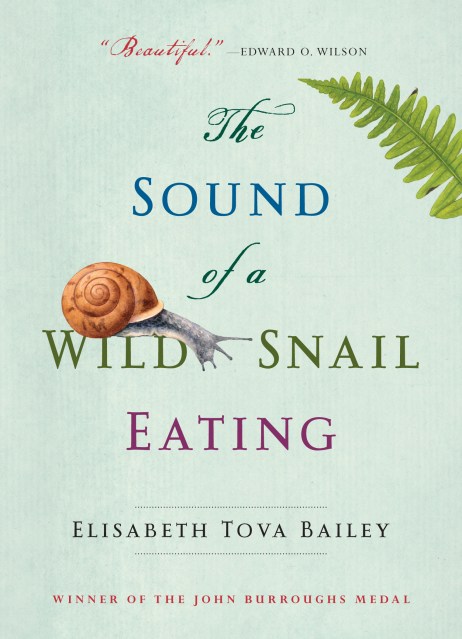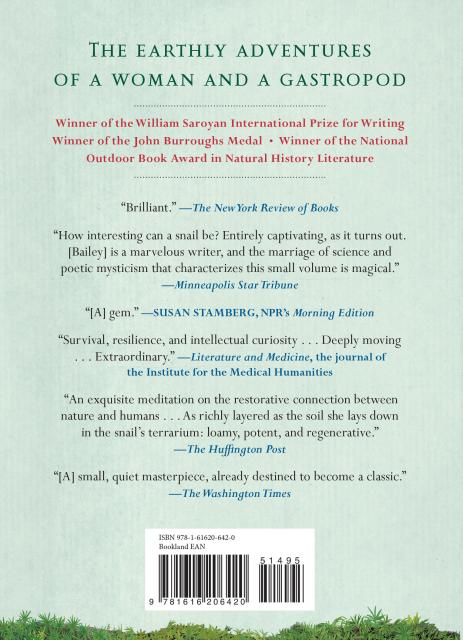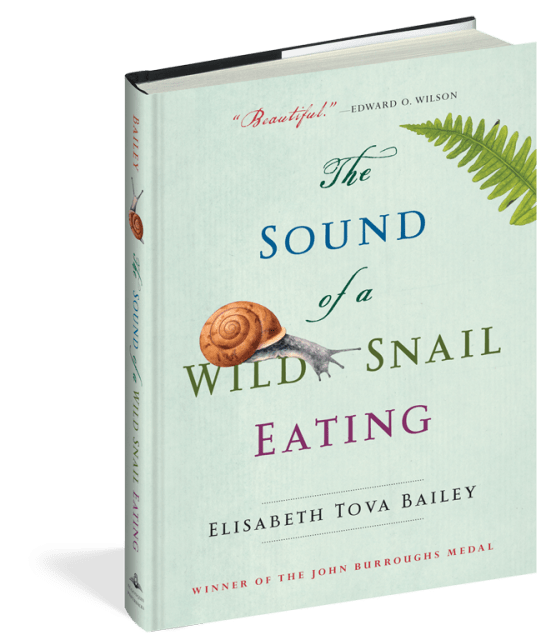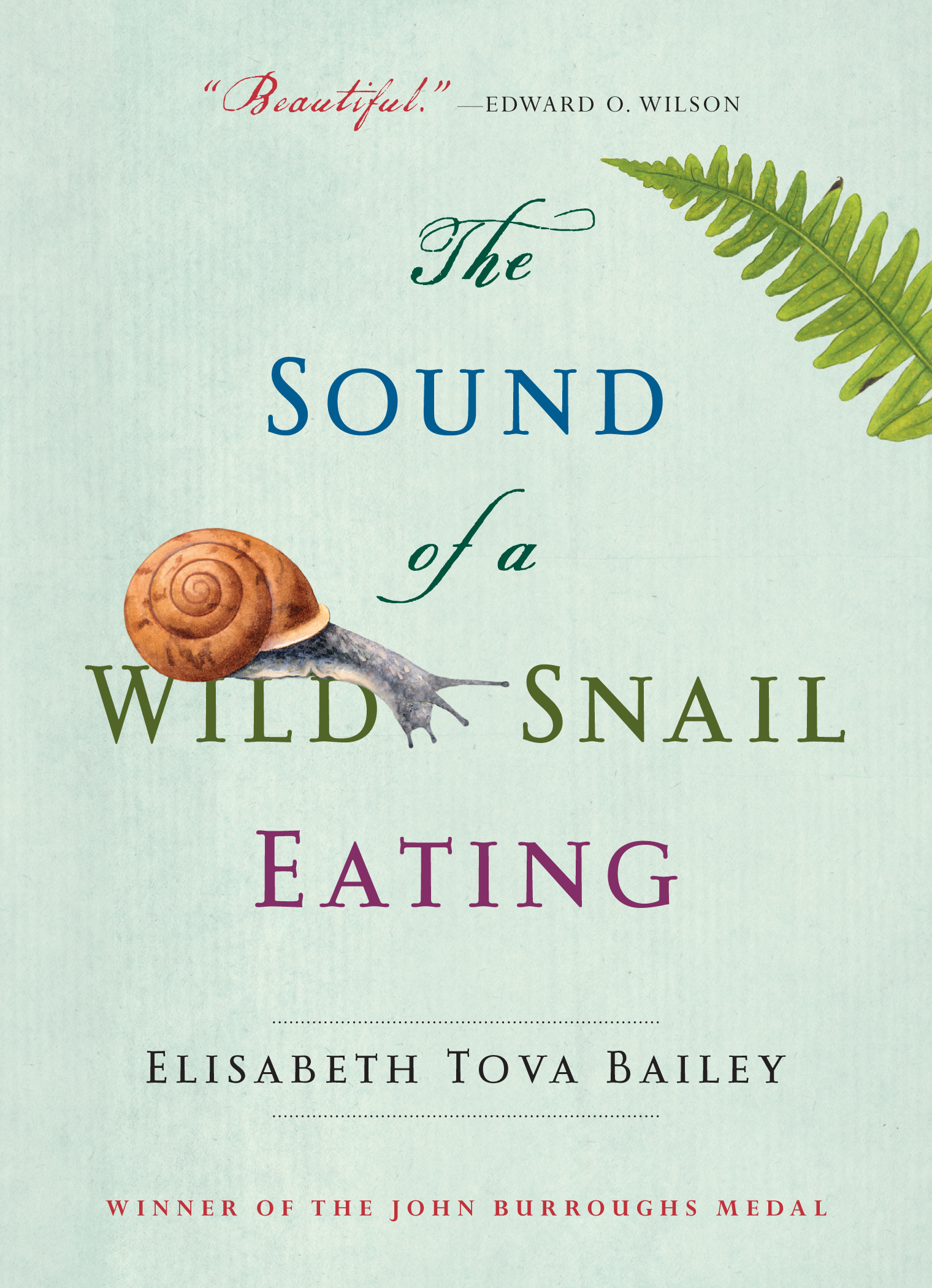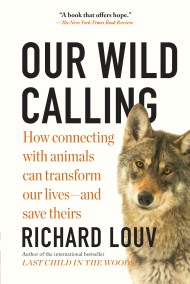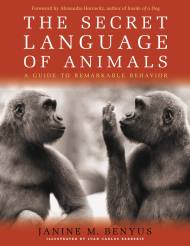Promotion
Use code MOM24 for 20% off site wide + free shipping over $45
The Sound of a Wild Snail Eating
Contributors
Formats and Prices
Price
$17.99Price
$23.99 CADFormat
Format:
- Trade Paperback $17.99 $23.99 CAD
- ebook $10.99 $13.99 CAD
This item is a preorder. Your payment method will be charged immediately, and the product is expected to ship on or around September 6, 2016. This date is subject to change due to shipping delays beyond our control.
Also available from:
Winner of The Saroyan International Prize for Writing, the John Burroughs Medal, and the National Outdoor Book Award in Natural History Literature
“Brilliant.” —The New York Review of Books
“Exquisite.” —The Huffington Post
“Magical.” —Minneapolis Star Tribune
In a work that beautifully demonstrates the rewards of closely observing nature, Elisabeth Tova Bailey shares an inspiring and intimate story of her encounter with a Neohelix albolabris—a common woodland snail.
While an illness keeps her bedridden, Bailey watches a wild snail that has taken up residence on her nightstand. As a result, she discovers the solace and sense of wonder that this mysterious creature brings and comes to a greater understanding of her own place in the world.
Intrigued by the snail’s molluscan anatomy, cryptic defenses, clear decision making, hydraulic locomotion, and courtship activities, Bailey becomes an astute and amused observer, offering a candid and engaging look into the curious life of this underappreciated small animal.
The Sound of a Wild Snail Eating is a remarkable journey of survival and resilience, showing us how a small part of the natural world can illuminate our own human existence, while providing an appreciation of what it means to be fully alive.
“Brilliant.” —The New York Review of Books
“Exquisite.” —The Huffington Post
“Magical.” —Minneapolis Star Tribune
In a work that beautifully demonstrates the rewards of closely observing nature, Elisabeth Tova Bailey shares an inspiring and intimate story of her encounter with a Neohelix albolabris—a common woodland snail.
While an illness keeps her bedridden, Bailey watches a wild snail that has taken up residence on her nightstand. As a result, she discovers the solace and sense of wonder that this mysterious creature brings and comes to a greater understanding of her own place in the world.
Intrigued by the snail’s molluscan anatomy, cryptic defenses, clear decision making, hydraulic locomotion, and courtship activities, Bailey becomes an astute and amused observer, offering a candid and engaging look into the curious life of this underappreciated small animal.
The Sound of a Wild Snail Eating is a remarkable journey of survival and resilience, showing us how a small part of the natural world can illuminate our own human existence, while providing an appreciation of what it means to be fully alive.
Genre:
-
WINNER OF THE WILLIAM SAROYAN INTERNATIONAL PRIZE FOR NONFICTION (2012)
WINNER OF THE JOHN BURROUGHS MEDAL (2011)
NATIONAL OUTDOOR BOOK AWARD FOR 2010 in Natural History Literature
BOOKS FOR A BETTER LIFE AWARD, FINALIST for Inspirational Memoir
TOP TEN ADULT SCIENCE TECHNOLOGY BOOKS FOR 2010, Booklist
BEST BOOKS OF 2010: MORE OF THE BEST, Library Journal
GREAT TITLES TO ADD TO THE NYT BEST OF 2010, Huffington Post
Praise:
“Beautiful.” —Edward O. Wilson
“Universal, deeply felt, and with an enormously generous soul, the gently told story grants readers a heightened appreciation for the ever-shrinking, ever-fascinating, secretive parts of our unkempt world.” —Alexandra Fuller for The Daily Beast
“How interesting can a snail be? Entirely captivating, as it turns out. [Bailey] is a marvelous writer, and the marriage of science and poetic mysticism that characterizes this small volume is magical.” —Minneapolis Star Tribune
“[Bailey] found comfort in an unlikely companion--a tiny snail, whose micro-doings are the source of a surprising philosophy.” —Entertainment Weekly
“An exquisite meditation on the restorative connection between nature and humans. . . Bailey's slim book is as richly layered as the soil she lays down in the snail's terrarium: loamy, potent, and regenerative.” —The Huffington Post
“[A] small, quiet masterpiece, already destined to become a classic.” —Washington Times
“A spare, beautifully quirky grace note of a book.” —Family Circle
“Though illness may rob us of vitality, sometimes it can also help bring us understanding---albeit in improbable disguises . . . Perhaps there's something to be said for moving at a snail's pace.” —NPR.org
“This elegant little gem is a triumph.”—Maine Sunday Telegram
- On Sale
- Sep 6, 2016
- Page Count
- 208 pages
- Publisher
- Algonquin Books
- ISBN-13
- 9781616206420
Newsletter Signup
By clicking ‘Sign Up,’ I acknowledge that I have read and agree to Hachette Book Group’s Privacy Policy and Terms of Use
